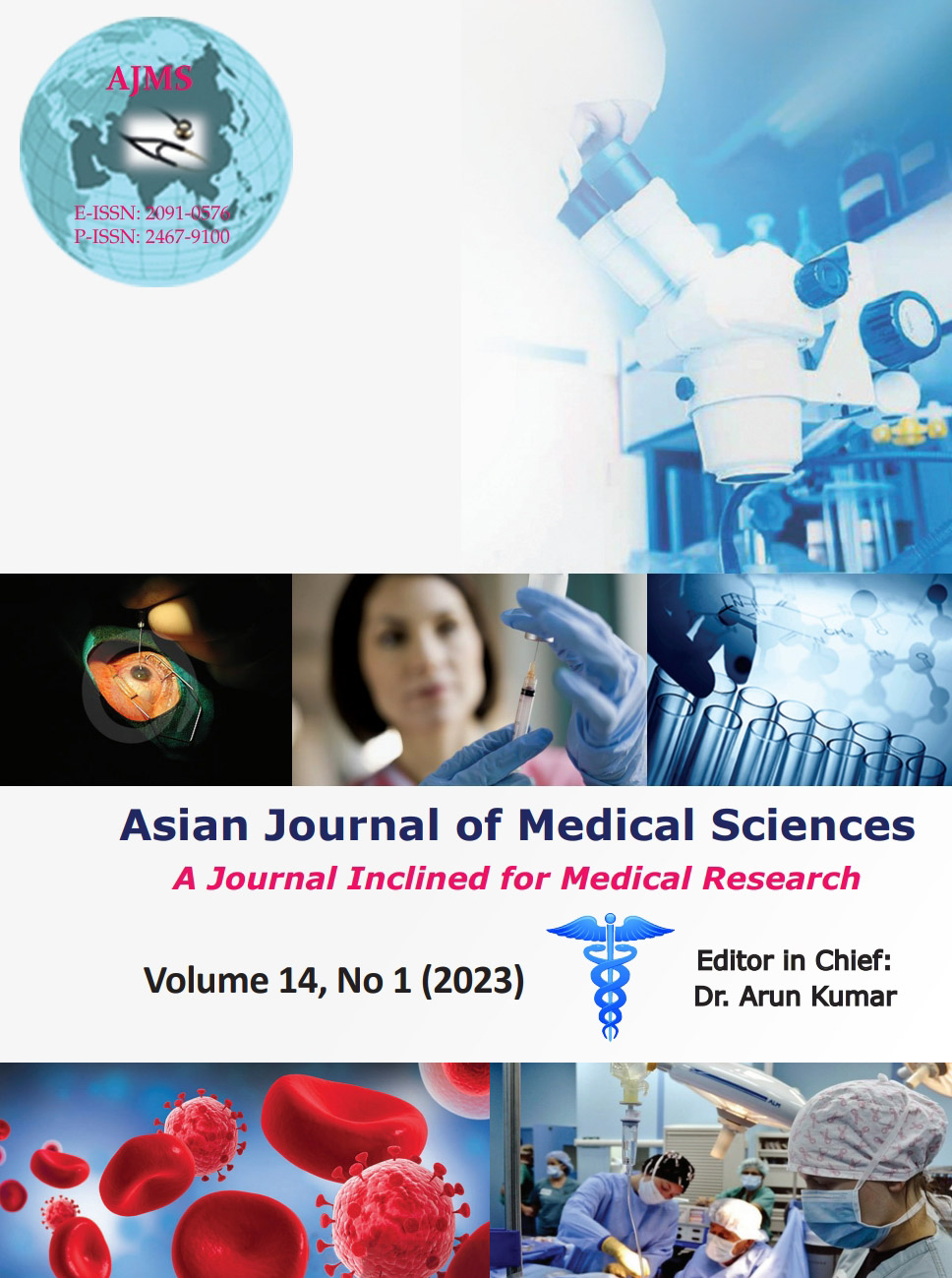Study of the functional outcome of medial compartment osteoarthritis of the knee treated with proximal fibular osteotomy
Keywords:
Proximal fibular osteotomy; Knee osteoarthritis; Visual analog score; Functional outcomeAbstract
Background: Knee osteoarthritis (OA) is a common painful and chronic condition that affects a large proportion of the population particularly older individuals. Increasing age and obesity are important predisposing factors for the development of knee OA. While in most of the cases, conservative approach is utilized, in patients not responding to conservative management surgical intervention is required. Proximal fibular osteotomy (PFO) is one of the important surgical procedures which is being increasingly used for managing knee OA not responding to conservative treatment.
Aims and Objectives: The objectives of the study are as follows: To study the role of PFO in medial compartment OA of knee. To study the clinical and functional outcomes of OA of knee treated with PFO with respect to pain, disability, and range of movements.
Materials and Methods: This was a prospective study conducted in the orthopedic division at Bharati Vidyapeeth Deemed College and Hospital, Sangli. Thirty patients with medial compartment knee OA and treated by PFO were included in this study on the basis of pre-defined inclusion and exclusion criteria. Body mass index (BMI) of all patients was determined. Pre-operative and post-operative visual analog scale index was analyzed to asses pain relief. Functional outcome was assessed by the Japanese Orthopaedic Association (JOA) score. P<0.05 was taken as statistically significant.
Results: Out of 30 studied cases, there were 18 (60%) females with a M: F ratio of 1:1.5. Fourteen (46.7%) of the participants had right side affected whereas 16 (53.3%) of the participants had left knee OA. The mean age of affected cases was found to be 71.27±9.92 years. The median (IQR) of age (years) was 72.00 (64–80) and the age ranged from 52 to 90 years. Nine patients (30%) were obese (BMI ≥30) and 13 (43.33%) patients were overweight (BMI ≥25 but <30). There was a significant reduction in pain at the time of final follow-up (P<0.0001). Analysis of functional assessment showed that mean JOA scores at the time of final follow-up had significantly improved as compared to JOA scores at the time of presentation. Complications were seen in 4 (13.33%) patients.
Conclusion: Proximal femoral osteotomy is effective in relieving pain and improving joint function in patients with medial compartment OA. It is an easy, safe, and cost-effective procedure with minimal complications.
Downloads
Downloads
Published
How to Cite
Issue
Section
License
Copyright (c) 2022 Asian Journal of Medical Sciences

This work is licensed under a Creative Commons Attribution-NonCommercial 4.0 International License.
Authors who publish with this journal agree to the following terms:
- The journal holds copyright and publishes the work under a Creative Commons CC-BY-NC license that permits use, distribution and reprduction in any medium, provided the original work is properly cited and is not used for commercial purposes. The journal should be recognised as the original publisher of this work.
- Authors are able to enter into separate, additional contractual arrangements for the non-exclusive distribution of the journal's published version of the work (e.g., post it to an institutional repository or publish it in a book), with an acknowledgement of its initial publication in this journal.
- Authors are permitted and encouraged to post their work online (e.g., in institutional repositories or on their website) prior to and during the submission process, as it can lead to productive exchanges, as well as earlier and greater citation of published work (See The Effect of Open Access).




